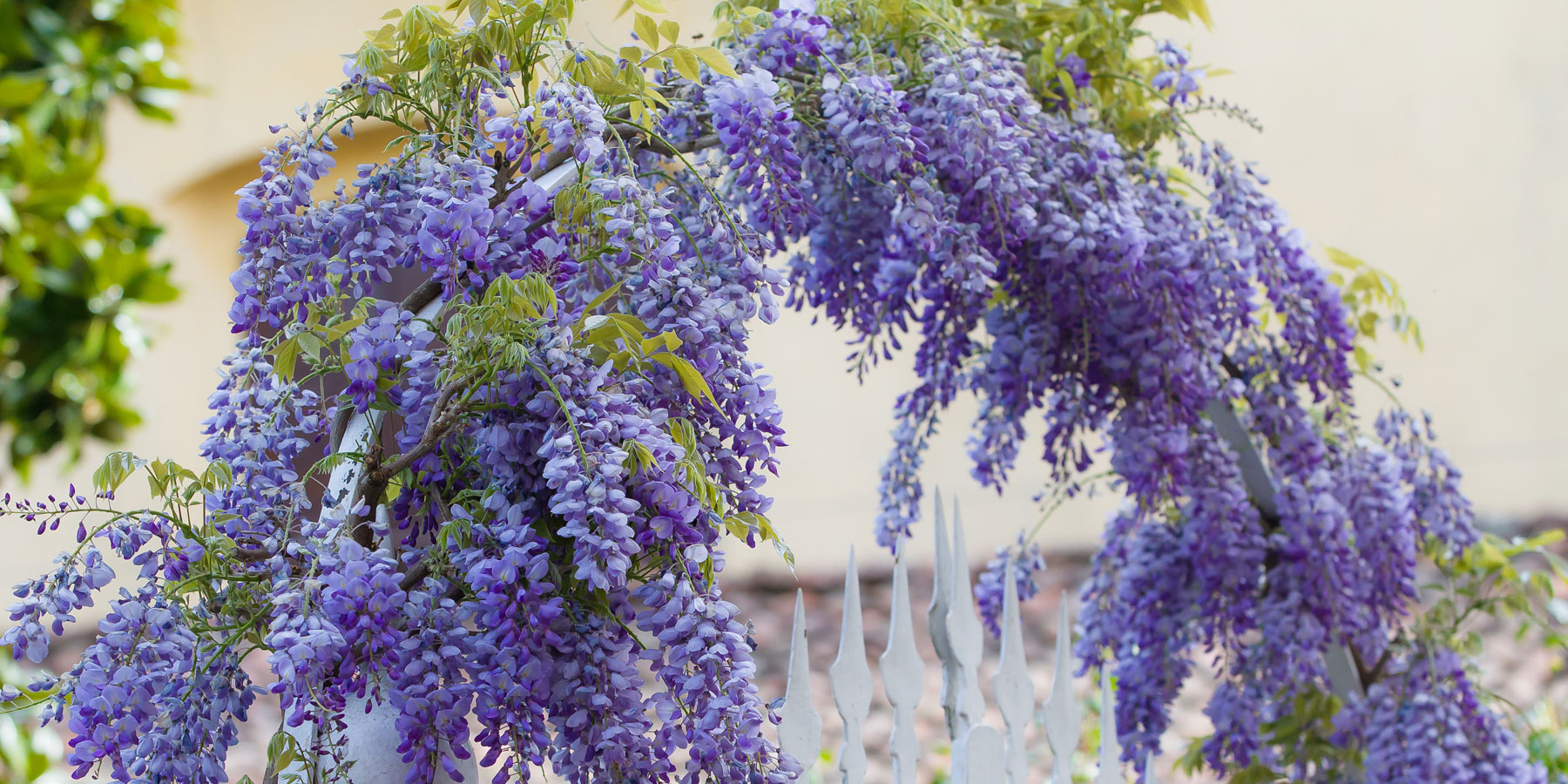
When used to support climbing plants garden arches add structure, height and focus to your yard that becomes more beautiful with each passing year. Garden arches can also be used to create a perfect entrance, frame a walkway, or lead from one area of the garden to another. You can also use an arch to frame a view beyond your garden, giving the impression that your yard is actually bigger than it is.
When choosing an arch be sure to consider the scale and style of it, as well as how it will fit in with the rest of the garden. Covered in flowers and foliage a garden arch adds a pretty punctuation mark to your landscape. But make sure the arch you choose is sturdy enough to support the weight of your climbing plant a couple of years along the line when it may have tripled in size.
Decorative metal or wooden arches in modern or rustic styles are one of the simplest ways you can introduce a hard structure to your landscape to showcase the best climbing plants. Now get creative with our recommendations.
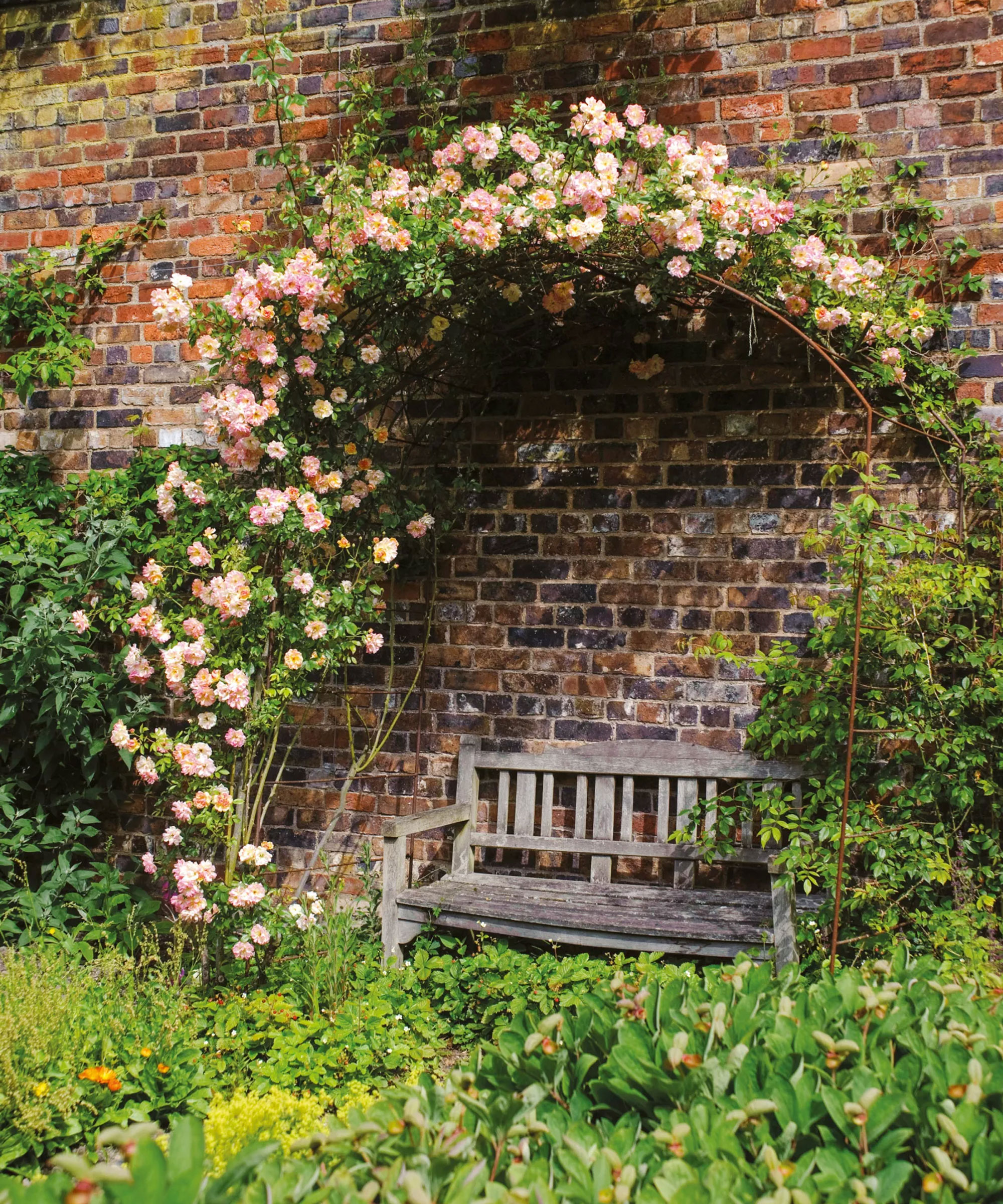
10 climbing plants for garden arches
Climbers are an easy way to enhance features like rustic arches that need some ornamentation. But knowing the nature of your climbers and how they grow is important when choosing plants for a garden arch.
Always match the spread of the climbing plant you choose with the size of your garden arch for the best results. This means you have to factor in how big the plant will be when it reaches maturity and make sure your climbing plant support ideas can accommodate it. We've made it easy by selecting our 10 favorite climbers for arches for you and there's bound to be one that suits your space.
1. Japanese wisteria
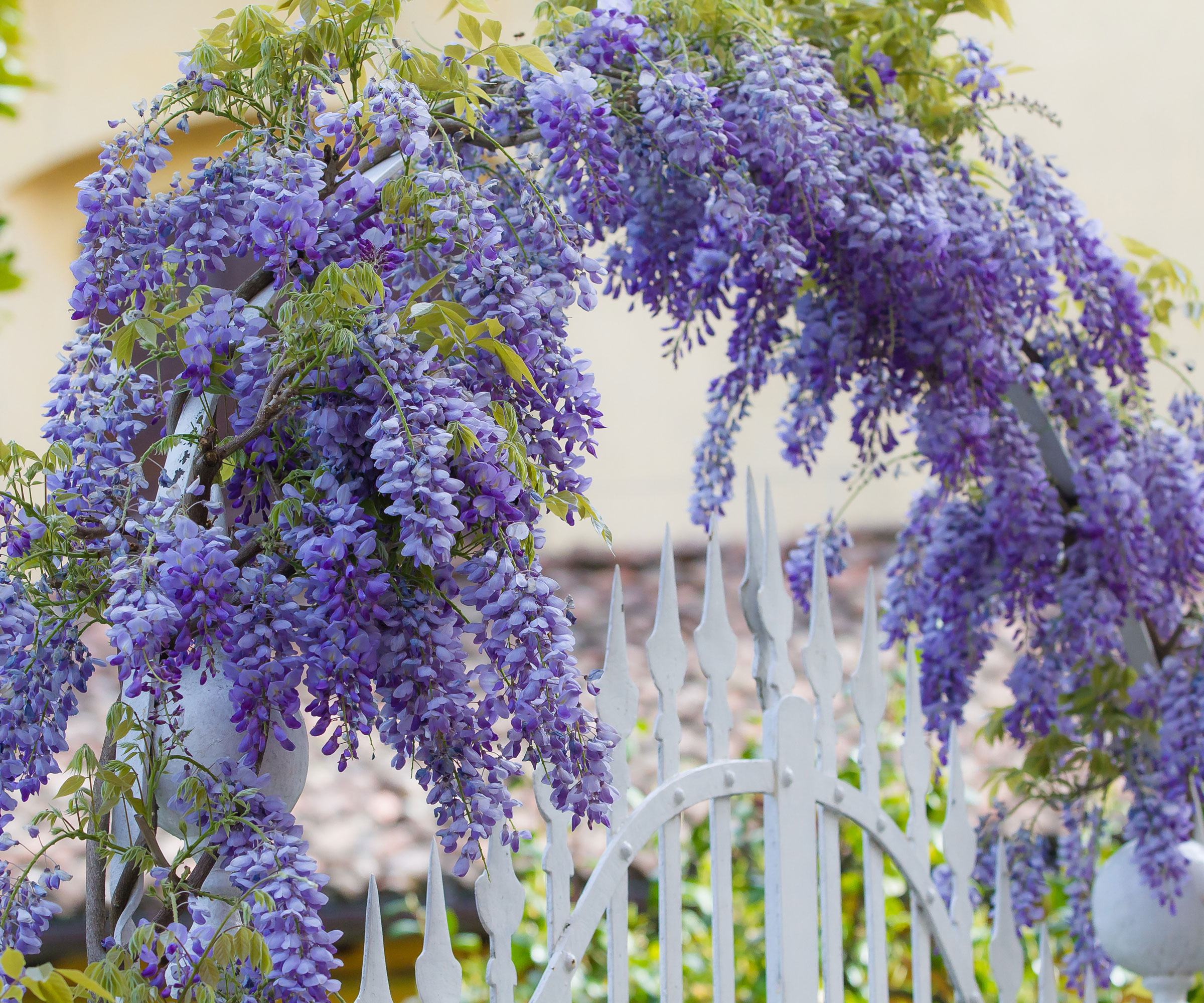
What could be more romantic than a garden arch covered with the gracefully cascading blooms of wisteria? Find out how to grow wisteria and this gorgeous climbing plant will create a dramatic display from late spring to mid-summer. Try Japanese wisteria such as Yae-kokuryu, a real show-stopper that thrives in both full sun and partial shade.
You will need to know how to prune wisteria too. It's a vigorous climber that can grow up to 30 feet tall so will need a sturdy structure that will be able to support the weight of the mature plant. It will also need ruthless pruning to contain the size and shape of the plant as it grows on your arch, and this will also promote more prolific flowering.
'When growing wisteria on an arch I would recommend making sure your structure is strong enough and that you prune your vine regularly,' says Alex Kantor, owner of Perfect Plants Nursery in Monticello, Florida. 'If you do not tend to your vine and your support system isn't strong enough the vine could cause your arch to collapse.'
2. Clematis
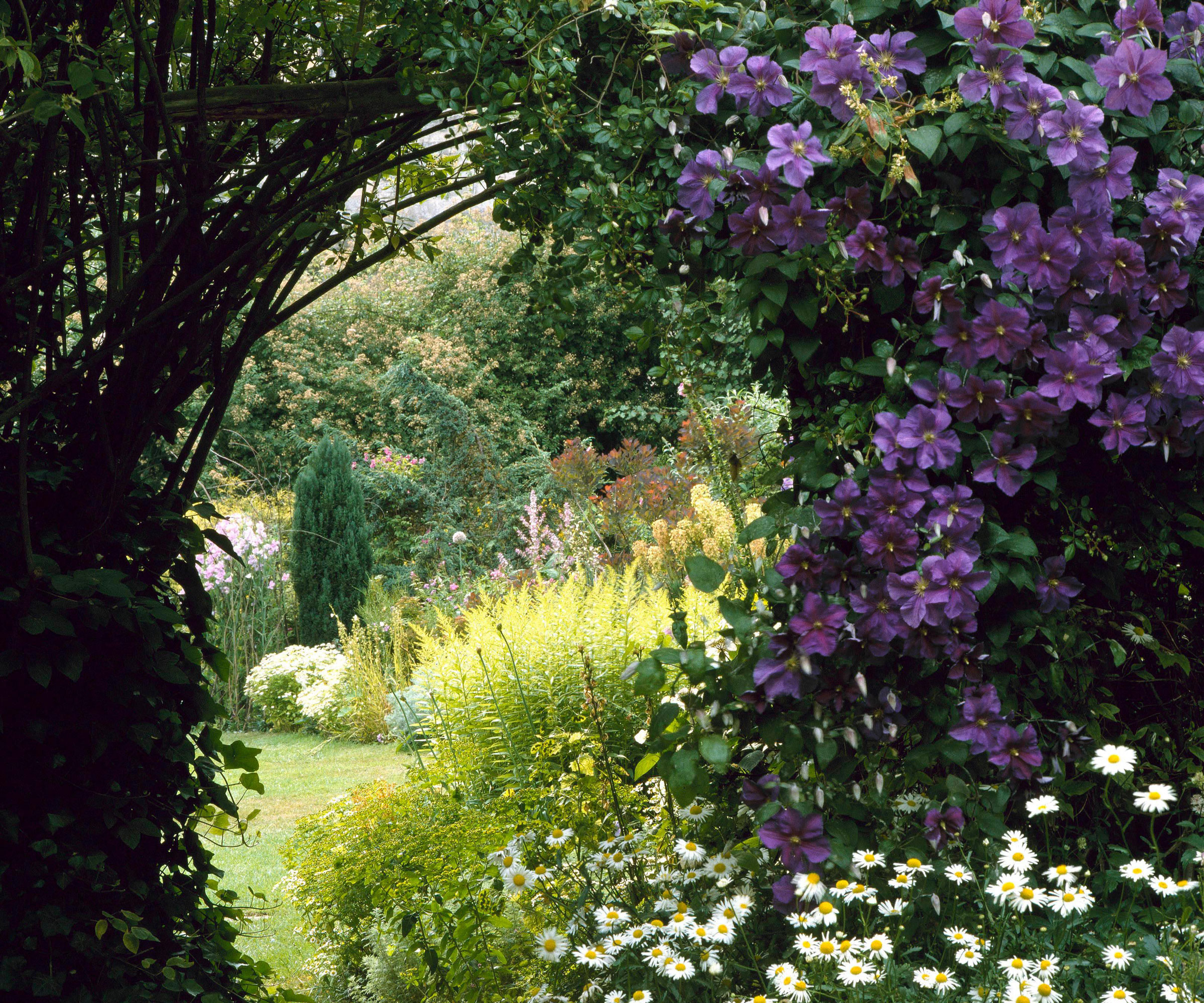
This climber is incredibly versatile and there's a huge range to choose from including large open blooms and delicate nodding bell flowers. They are firm favorites for garden arches and look particularly lovely climbing up a rustic willow framework, so find out how to grow clematis to get the look.
Easy to construct, either buy a ready-made willow arch or create your own by weaving rods of living willow or buying dried ones you pre-soak to make them flexible. If the willow starts to sprout, simply prune it back in winter to keep it tidy.
Clematis plants may need a little encouragement at first to twine around the framework of your arch but once established they won't need tying in. They also work well combined with other climbers such as roses.
'You can also mix different vines together,' says plantsman Gary Lewis of Phoenix Perennials and Specialist Plants. 'Honeysuckle and clematis are a natural combination with the contrast in the large clematis flowers and the clusters of small, tubular, fragrant honeysuckle flowers.'
3. Climbing rose
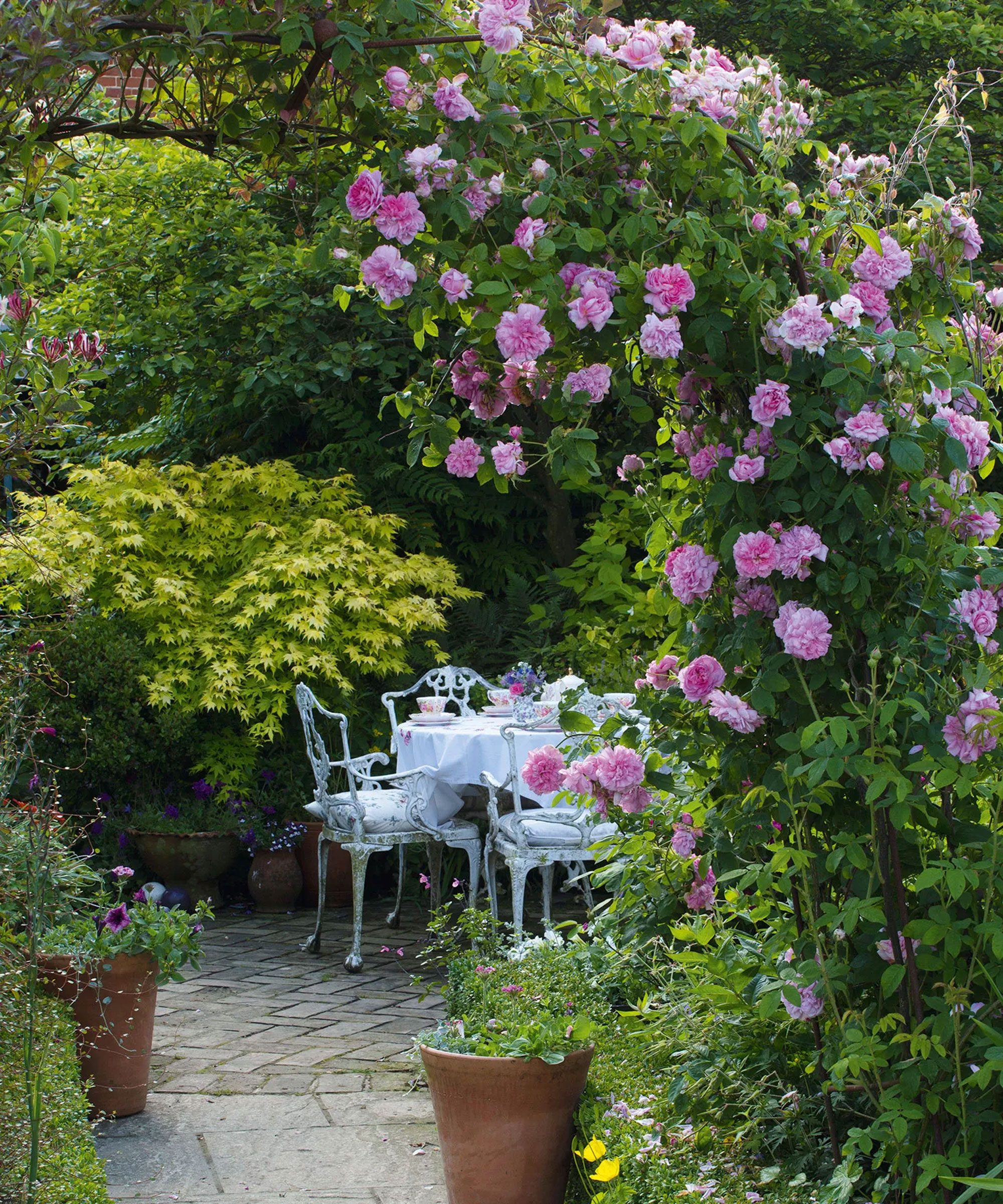
'A rose arch adds height and formality to a garden, linking different areas and formatting an entranceway with flowers overhead, so the beauty and scent of the roses can be enjoyed every time you walk through,' say the experts at David Austin Roses. 'Always choose a sturdy archway. For small arches, avoid the more vigorous climbers and ramblers, which could completely overwhelm the structure.'
For a large arch (8-10 feet) the David Austin team recommends 'Iceberg' for repeat flowering and 'Constance Spry' or 'Wollerton Old Hall' for fragrance. To create extra support for rose stems choose an arch with inset lattice panels. With so much choice find out how to prune climbing roses for the best display and how to prune climbing roses to keep a profusion of beautiful blooms coming year after year.
We also love the idea of linking a few garden arches together along the length of a path to create impact using a sequence. Roses are an excellent choice of climbing plant for this, creating a scented tunnel for you to walk through and enjoy.
4. Sweet peas
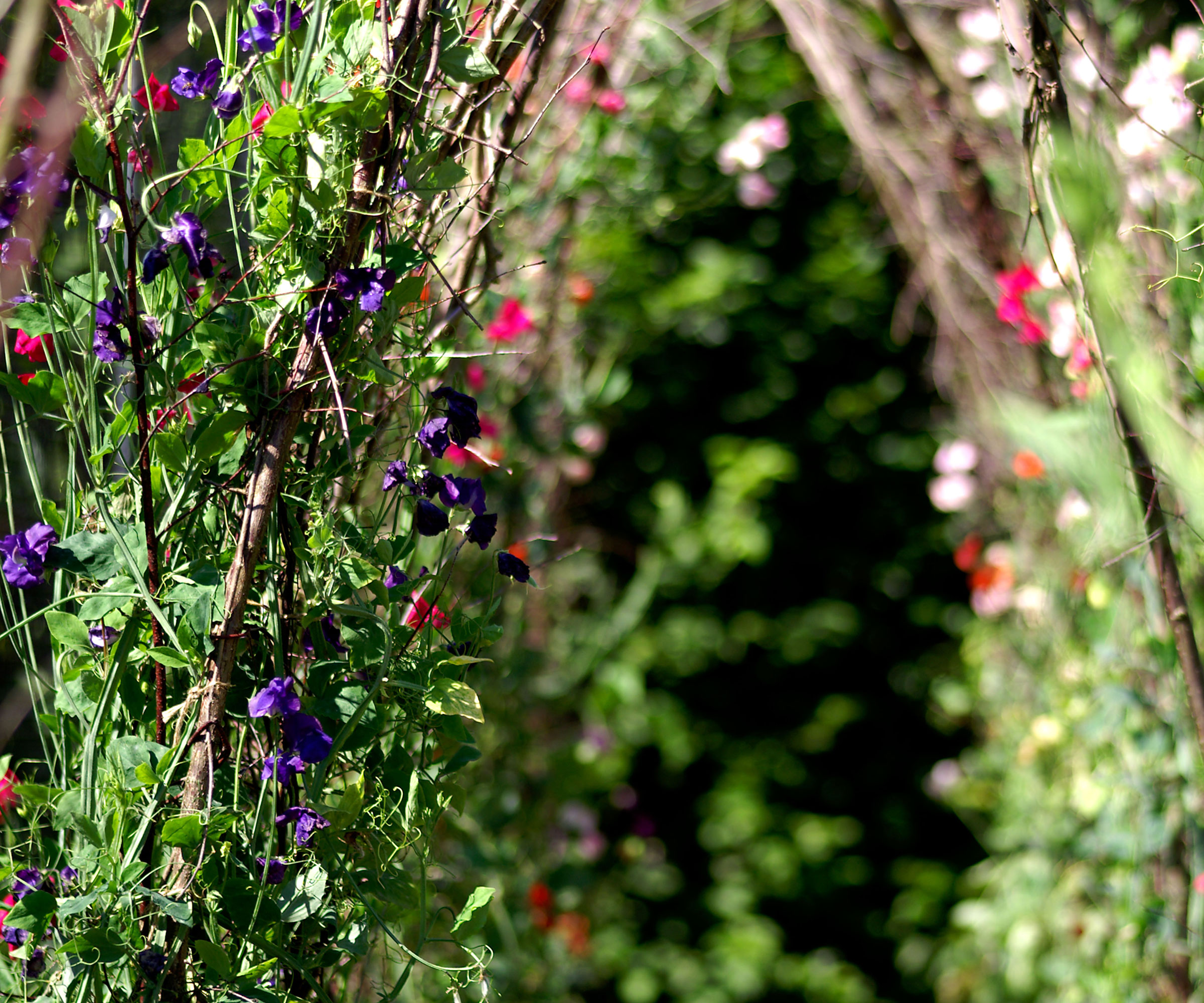
'We have arches covered with sweet peas in flower during June and July. They fill the garden, house, and life with scent and color,' says plant expert Sarah Raven. 'They are the stars of our summer season. The range of sweet peas to enjoy is huge, from rich, saturated blues and purples, to pastel shades and luscious bi-colors.'
Sweet peas are fantastic climbing plants that need good vertical support and a frame to climb over as they often reach over 6 feet tall. A woven willow arch is ideal as you can strengthen the sides of the arch too and give your sweet peas plenty of horizontal supports to climb.
Find out how to grow sweet peas and either plant seeds directly in the ground or buy young sweet pea plants from the nursery or garden center. As they begin to grow, tie them into the vertical support. It's really important to tie in your sweet peas as they’ll grow more quickly and make stronger plants.
5. Honeysuckle
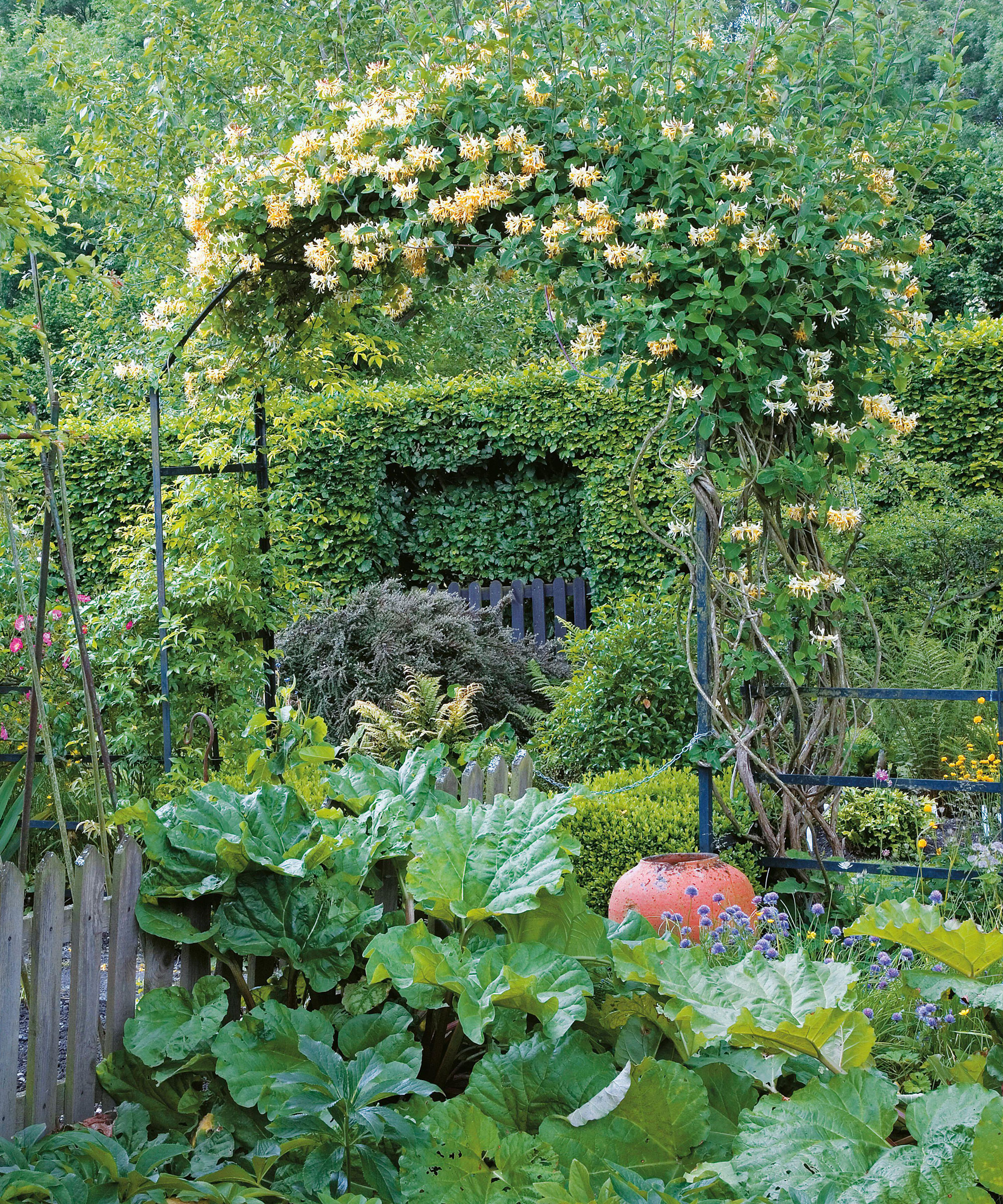
Twining plants like honeysuckle grow in the wild through shrubs and trees, winding themselves around the branches for support. This means they are one of the best climbing plants for arches. Once you have initially threaded the young stems through the support the plant will keep going from there without any extra help.
Give your honeysuckle plants lots of sun and they will soon be up and over the arch, covering it in swathes of yellow, apricot and pink flowers that are drenched in old-fashioned scent. Try the showy flowerheads of Lonicera x.americana, which has very fragrant, free-flowering yellow flowers turning purple and red as the flowers mature. This variety is one of the classic cottage garden plants.
Find out how to grow honeysuckle to get the best out of your plants. Lightly pruning the flowering shoots on the previous year’s growth in winter or early spring will improve the flowering performance in the next season.
6.Cobaea scandens
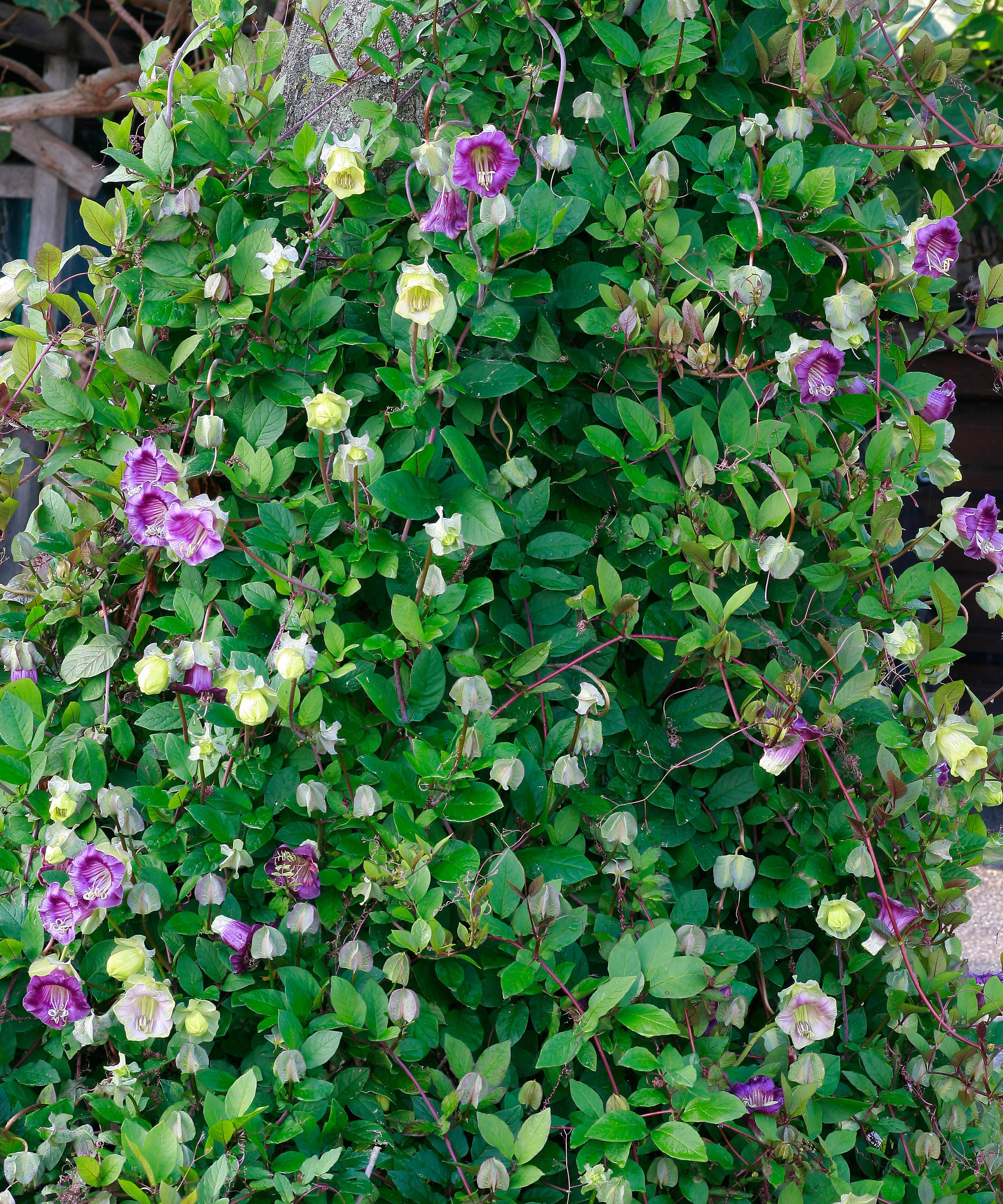
Also known as the cup and saucer vine, this self-clinging climber has flowers that change from yellow-green to purple as they mature and grow to a height of around 15 feet. It's one of the best fast-growing flowering vines for covering an arch. Start training young vines up the arch and they'll take it from there. To control the size of the plant, pinch off the stems when they reach the top of the arch.
The large flowers and lush foliage have a tropical appearance and are sweetly fragrant. This plant hails from Mexico so loves a position in full sun and won't be hardy if you live in a cooler climate.
There's a rarer white variety too called Cobaea scandens f.alba that's evergreen with bell-shaped flowers, which will also lend an exotic look to a garden arch.
7. Pink bower vine
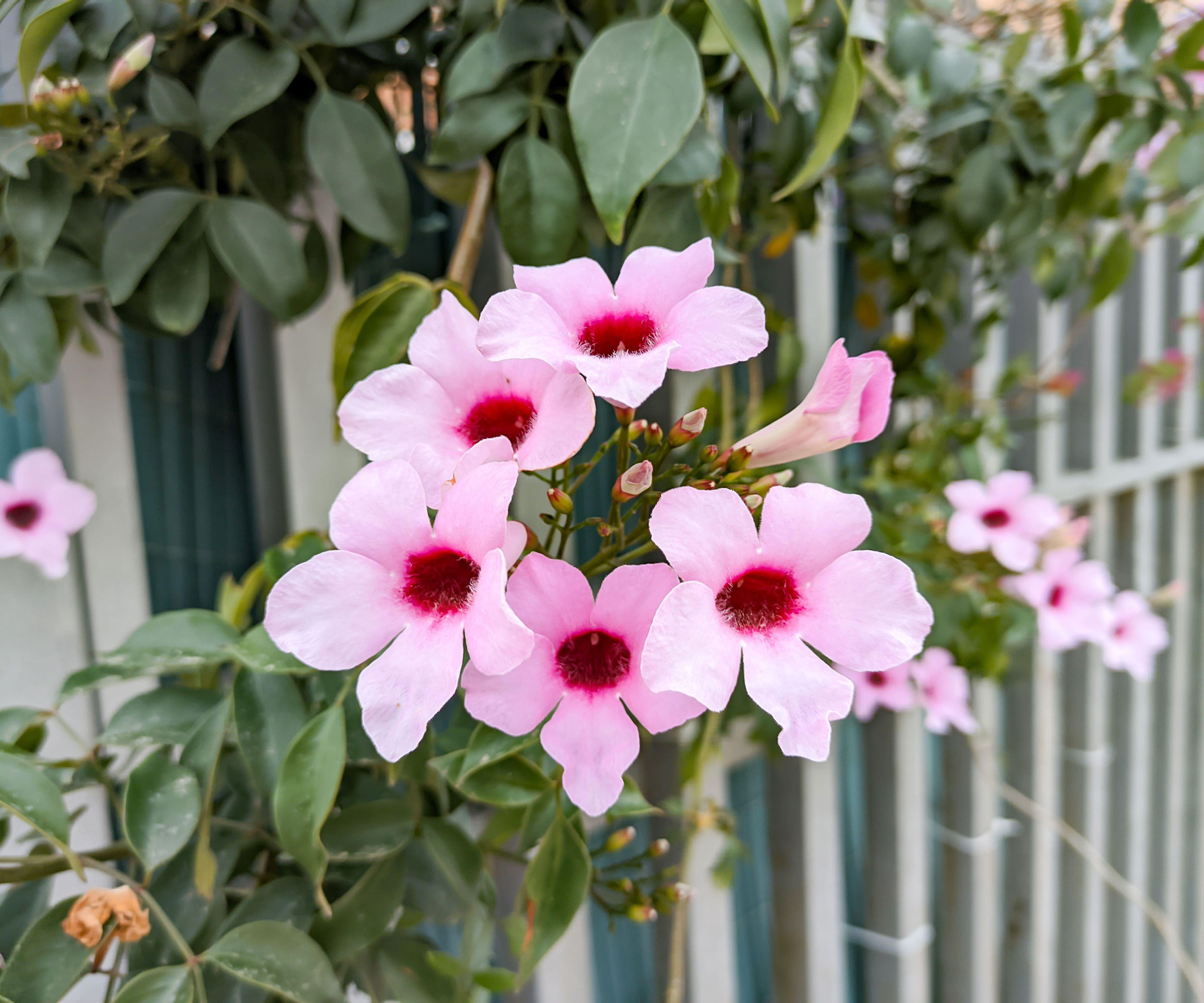
The bower vine is a beautiful, subtropical, twining plant that produces delicate pink and white flowers throughout most of the year and is one of the best climbing plants for arches and other supports. Also known as Pandorea jasminoides, the flowers are very fragrant too.
'The true beauty of this vine lies in its tubular flowers,' says horticulturist Noelle Johnson, author of Dry Climate Gardening, available from Amazon. 'Pale pink blooms with deep red centers are clustered over lush green foliage. While most flowering occurs in spring, some repeat blooming can occur in summer and fall. Pink bower vine is slow to moderate growth and is frost tender but it will recover quickly in spring.'
This plant definitely needs a garden arch or other support as it can climb up to 25 feet. It's a fast grower that makes a great screening plant. It will need pruning in early spring to remove any frost-damaged growth and to cut back any wayward tendrils. Spring is also a good time to fertilize it.
8. Morning glory

Fast-growing morning glory (also known as Ipomoea) is a twining climber with beautiful, exotic-looking flowers and heart-shaped green leaves. The blooms open in the morning and close in the afternoon, which explains the name. They keep coming for months right through summer and into fall. Morning glory is also one of the best flowers that attract hummingbirds.
It's one of the best climbing plants for arches too and can grow up to 10 feet high. So you can limit its height by restraining it to the dimensions of the arch. Morning glory needs plenty of sun and a sheltered site in order to grow well.
The blooms come in a range of varieties and colors of which the best-known is ‘Heavenly Blue’. Pale blue, purple, red, and bi-colored flowers are also available. Removing any faded and dead flower heads encourages more blooms.
9. Solanum laxum 'Album'
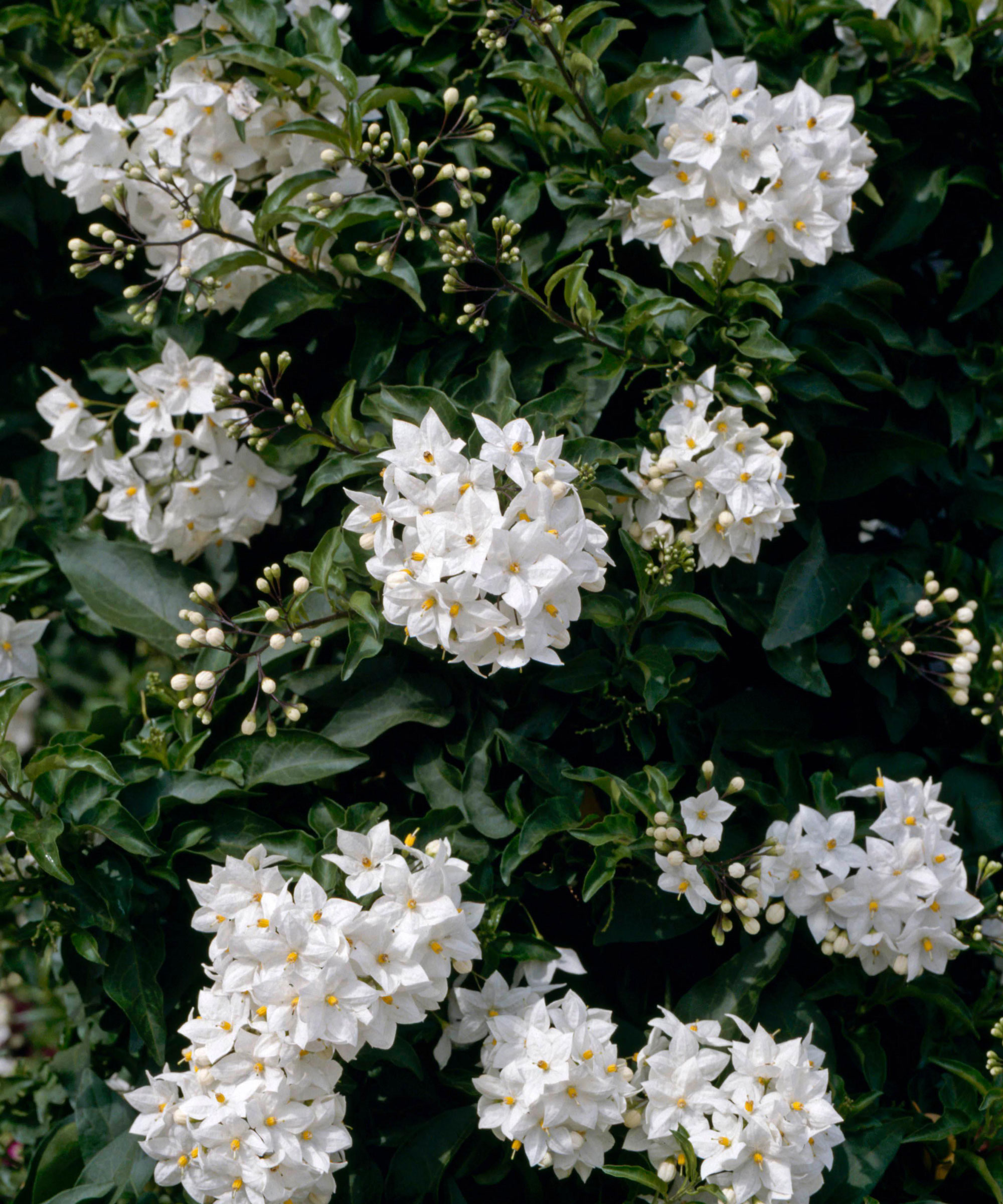
Also known by the much less glamorous name of potato vine, Solanum laxum 'Album' has slightly fragrant white flowers with a yellow center that blooms from mid to late summer. If you live in a mild climate you will likely get flowers all year round. A native of South America, it's an exotic-looking plant that's loved by hummingbirds.
Solanum laxum is a vigorous grower and can easily reach a height of up to 20 feet. So the stems need tying to a support such as a garden arch. As well as being one of the best climbing plants for arches this plant likes to grow up through other shrubs or climbers such as clematis, and prefers a sunny position. Pruning may be required to control the plant size and this is best done in the spring.
'These semi-evergreen vines are great at rambling and spilling, or climbing over anything they're trained on throughout the warmest parts of the growing season,' says the team at Omaha, Nebraska-based plant nursery Nature Hills. 'They are fragrant alternatives to jasmine and pollinators adore them.' You can find Solanum here at Nature Hills.
10. Bougainvillea

'Bougainvillea is a bold and vital star that can bring the ultimate super bloom to a garden,' says horticulturalist Jac Semmler, author of Super Bloom, available at Amazon. 'There is an exuberance when there is that amount of color on a plant. Vivid flowers coat the vines in brilliant jewel tones of fuchsia, magenta, scarlet and purple. Other cultivars are available in softer colors like apricot, cream, and blush pink.'
Rampant in the right conditions, choose a bougainvillea and it will speedily cover a garden arch. They are one of the most exotic-looking plants you can grow. Despite their delicate good looks, they don't need much care once they have settled in after planting. They rarely need watering but they need to be well fed with a fertilizer specially formulated for bougainvilleas.
If you're looking for more ideas on the best climbing plants for arches, you can also grow vegetables on them, especially if you're short on space. 'I have grown tomatoes, cucumbers and beans successfully on the archway that is the entrance to my garden,' says horticulturalist Gail Pabst, who works for the National Garden Bureau. 'It is a great use of space when you want vegetables that are vining and you do not have a lot of space for them.
Growing vegetables on an archway also makes it easier to see and pick the produce says Gail, as they're more visible hanging from the support.
'If you're feeling adventurous, try growing some squash or gourds on your archway,' adds Gail. 'As long as the structure can support their weight, they'll thrive. Walking under an archway with squash or gourds hanging down is sure to be a conversation starter. Butternut, Delicata, and Sugar Pie Pumpkins are a few of my favorite squash plants that grow well vertically.'
Get the most out of your growing space with more small vegetable garden ideas.







